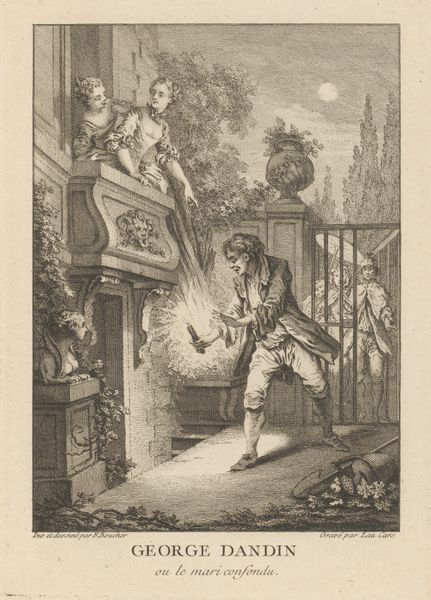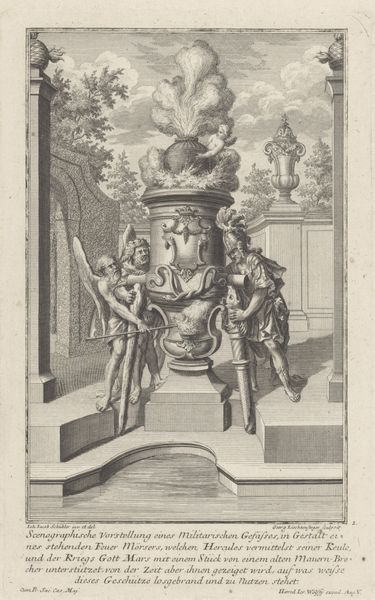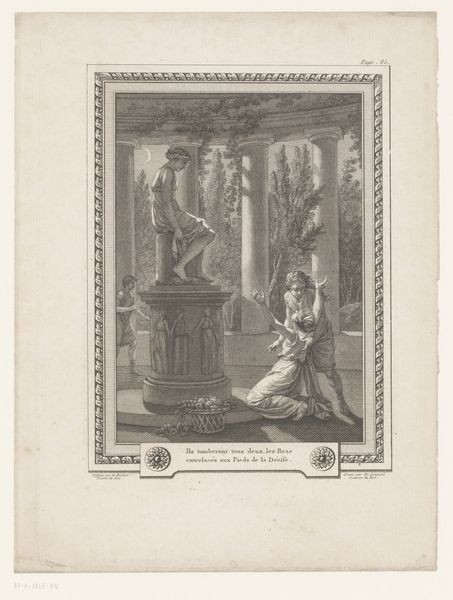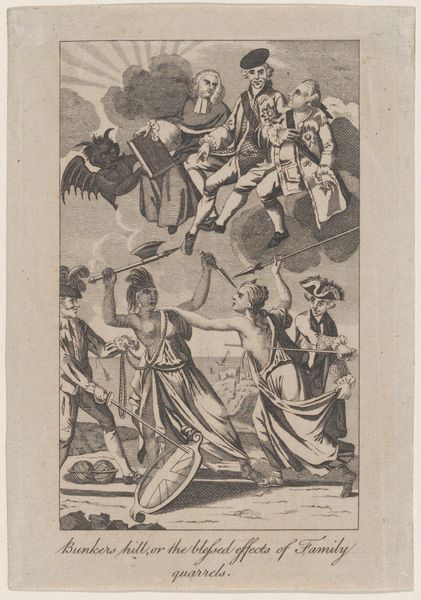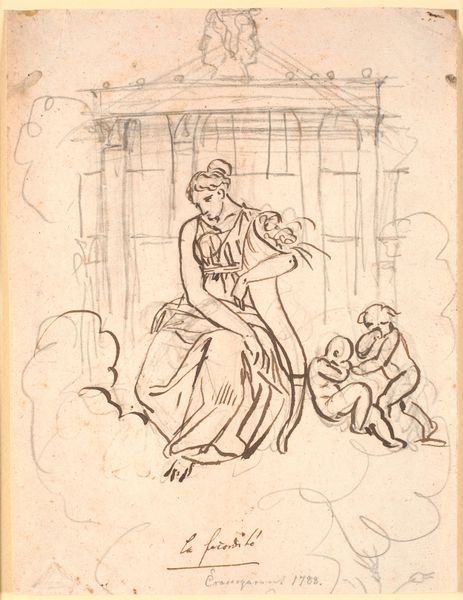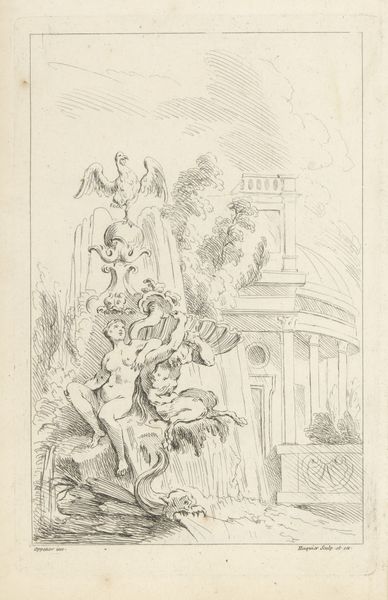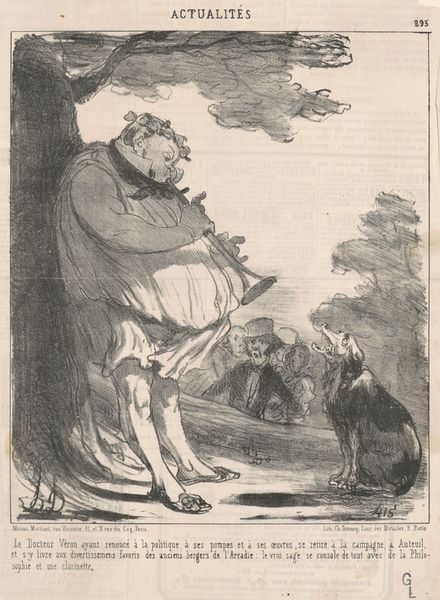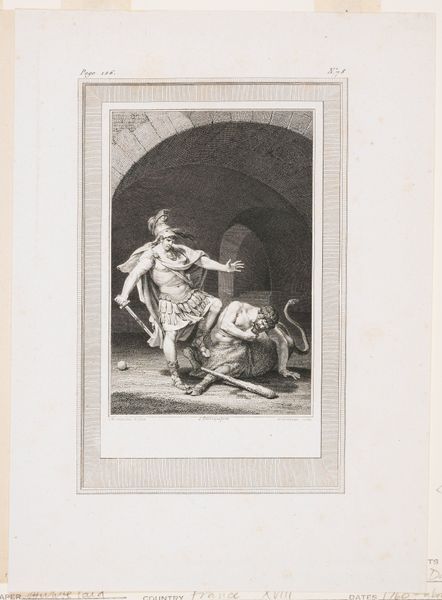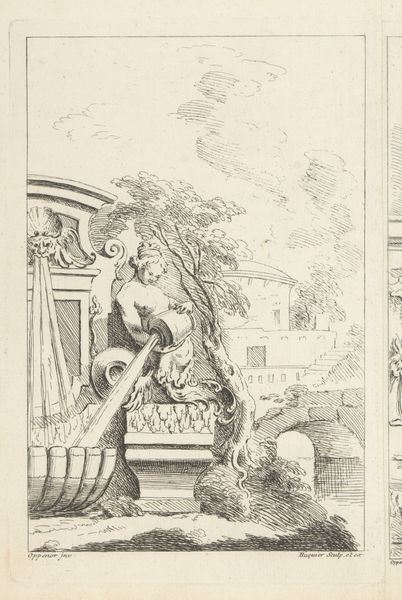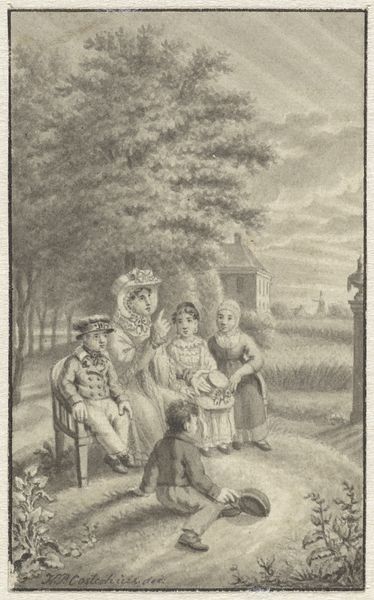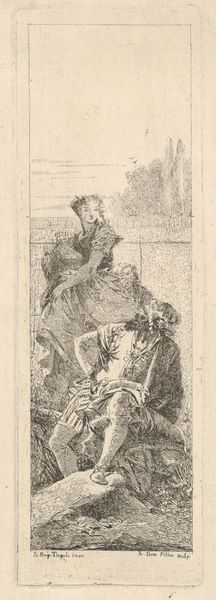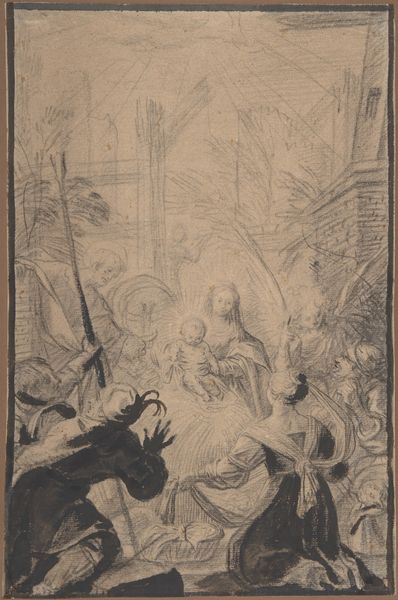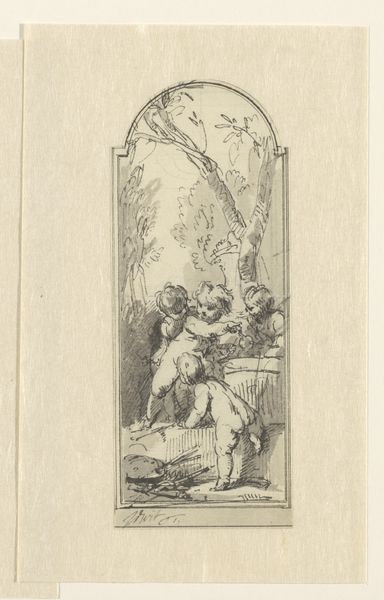
drawing, pencil
#
portrait
#
drawing
#
baroque
#
pen sketch
#
pencil
#
history-painting
#
academic-art
Dimensions: 296 mm (height) x 210 mm (width) (bladmaal)
Curator: This drawing by Marcus Tuscher, titled "Christian VI til hest," was created between 1742 and 1745. It resides here at the SMK, Statens Museum for Kunst. Editor: It's so delicate! The limited tonal range created by the pencil and pen lines lends it a kind of quiet drama. Is it just me, or does the texture of the paper itself seem crucial to the overall effect? Curator: Absolutely. The artist is definitely playing with surface quality here. These types of formal portraits served to bolster the image of the monarchy. The Baroque period was a real moment for the production of dynastic imagery meant to inspire loyalty, as we see exemplified in the monument behind Christian. Editor: The horse is so central to that image construction as well! These creatures would have been specifically bred for size and color to appear strong and proud. In rendering this drawing, Tuscher shows incredible dexterity. How do you see his skill influencing the overall message? Curator: I agree, it does show real command of the medium. Equestrian portraits served not only to depict the ruler, but also to connect him to ideas of military prowess and noble authority. He has his own army beside him, and he's proceeding to Germany... quite a show of power. Editor: It’s remarkable how the artist creates such detail, especially on the horse’s bridle and saddle. Given its function as a study, do you think Tuscher succeeded in this work being regarded as 'fine art', escaping the world of 'craft'? Curator: That's a great question! While drawing held an important preparatory role, it also allowed for experimentation and the development of artistic ideas outside the more formalized constraints of painting or sculpture. Academic art valued technical skill above all, but still placed those skill-driven practices in an artificial hierarchy with 'craft' underneath. Editor: So interesting how these images solidify the narrative around rulers, all through these material means and modes of representation! Curator: Exactly. It makes me think about how portraits help create the leaders we expect and accept. Editor: For me, seeing the marks of the artist's hand through the materiality offers a unique entry point to the society in which it was created.
Comments
No comments
Be the first to comment and join the conversation on the ultimate creative platform.
